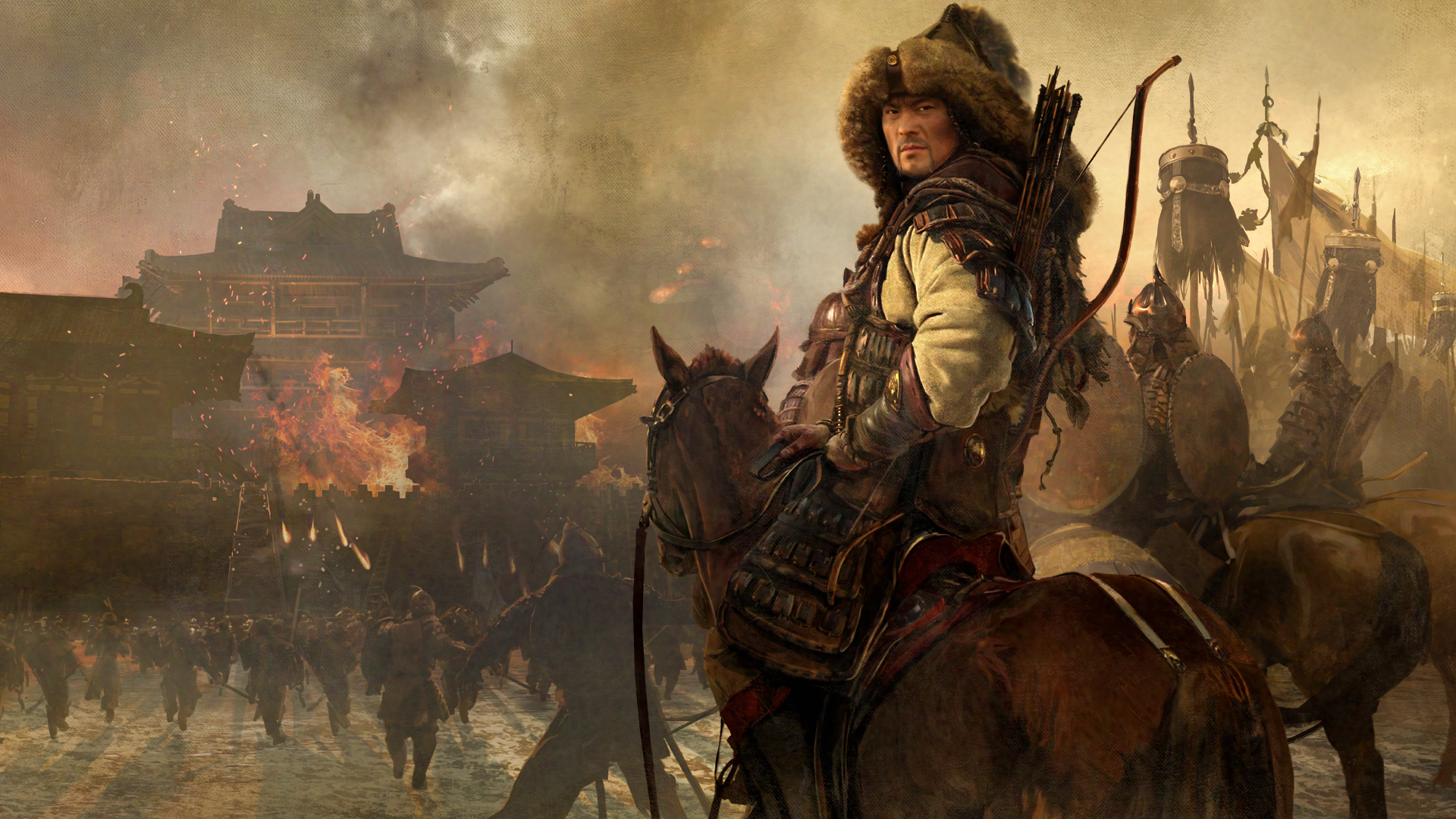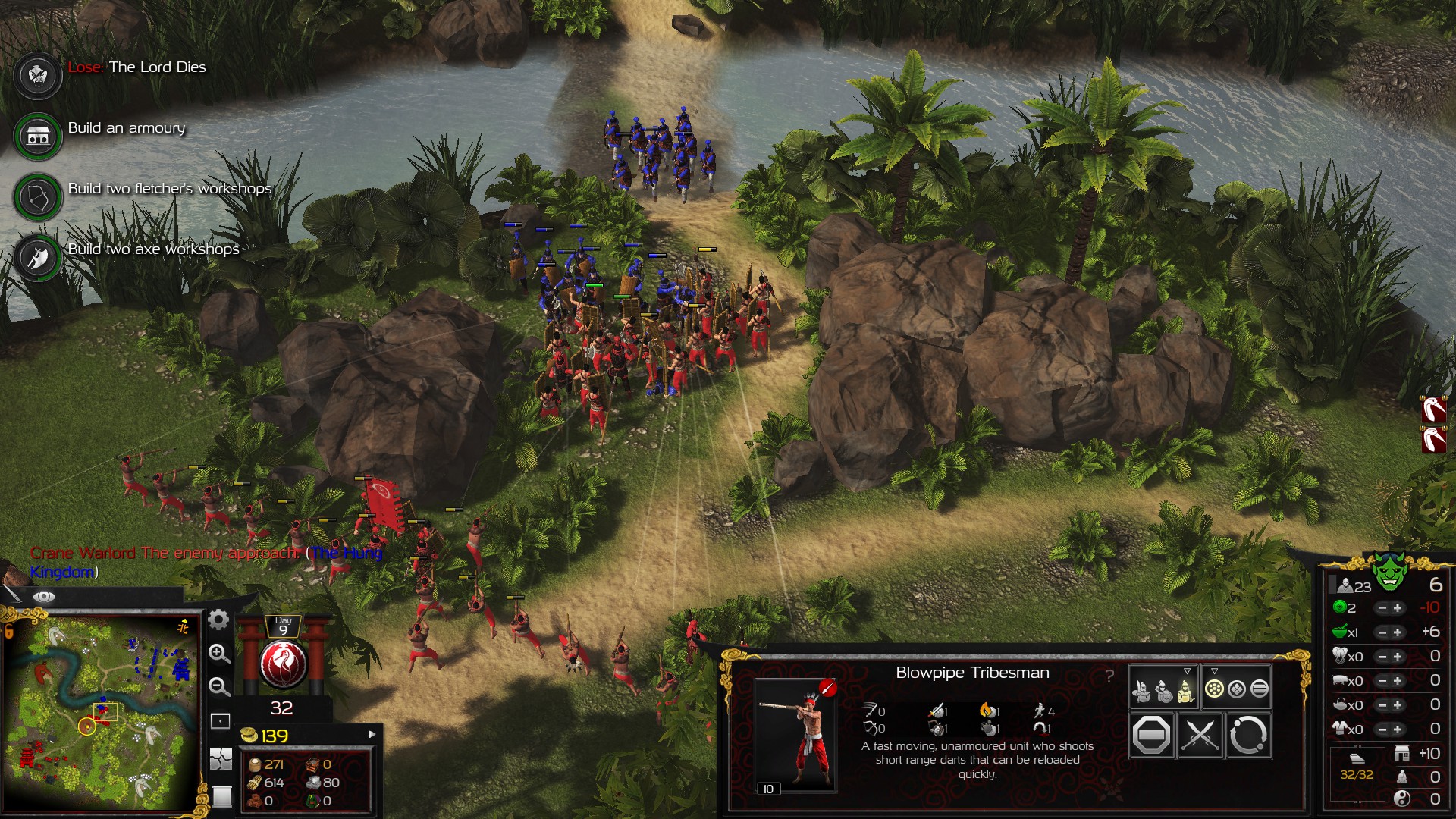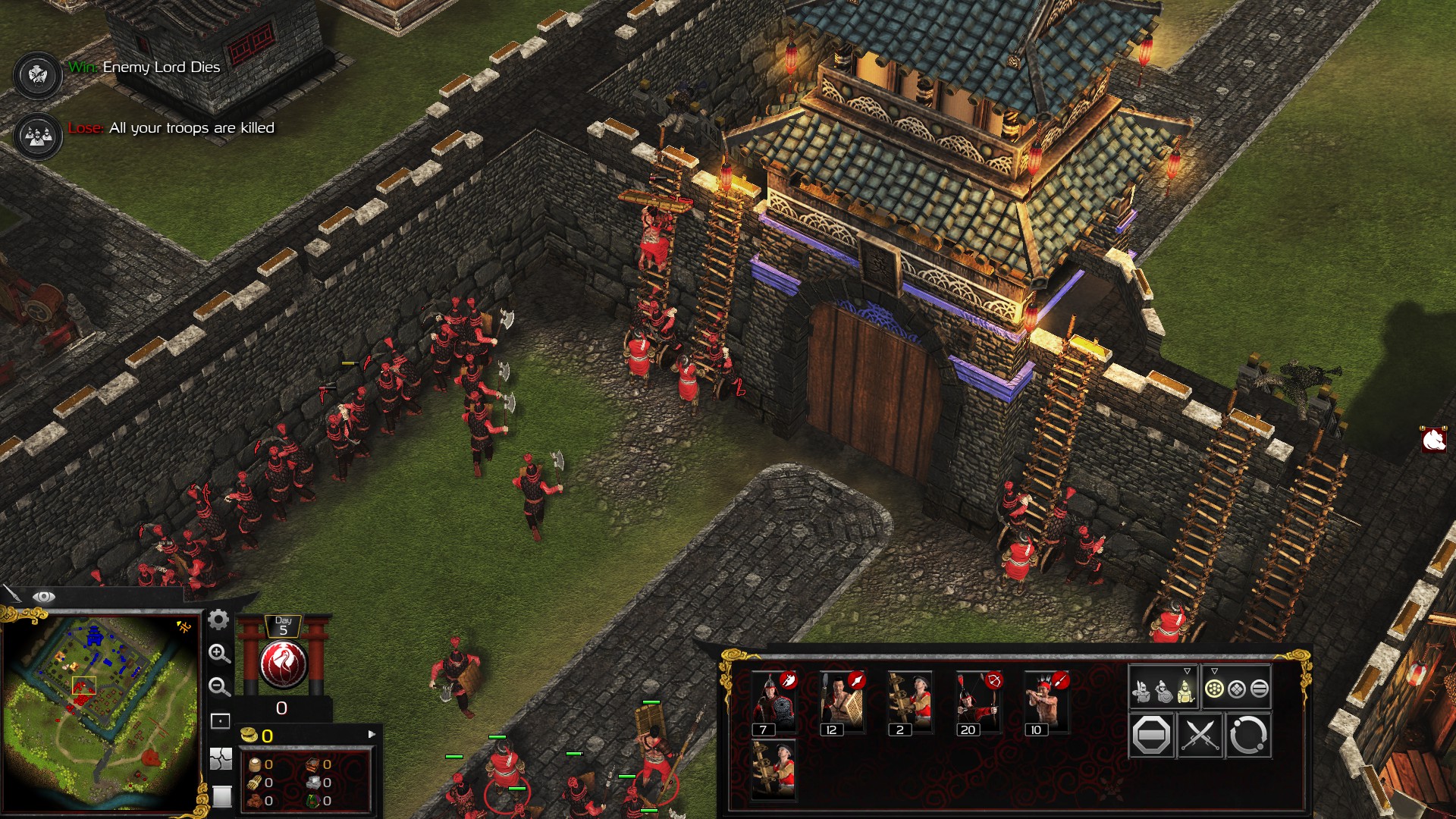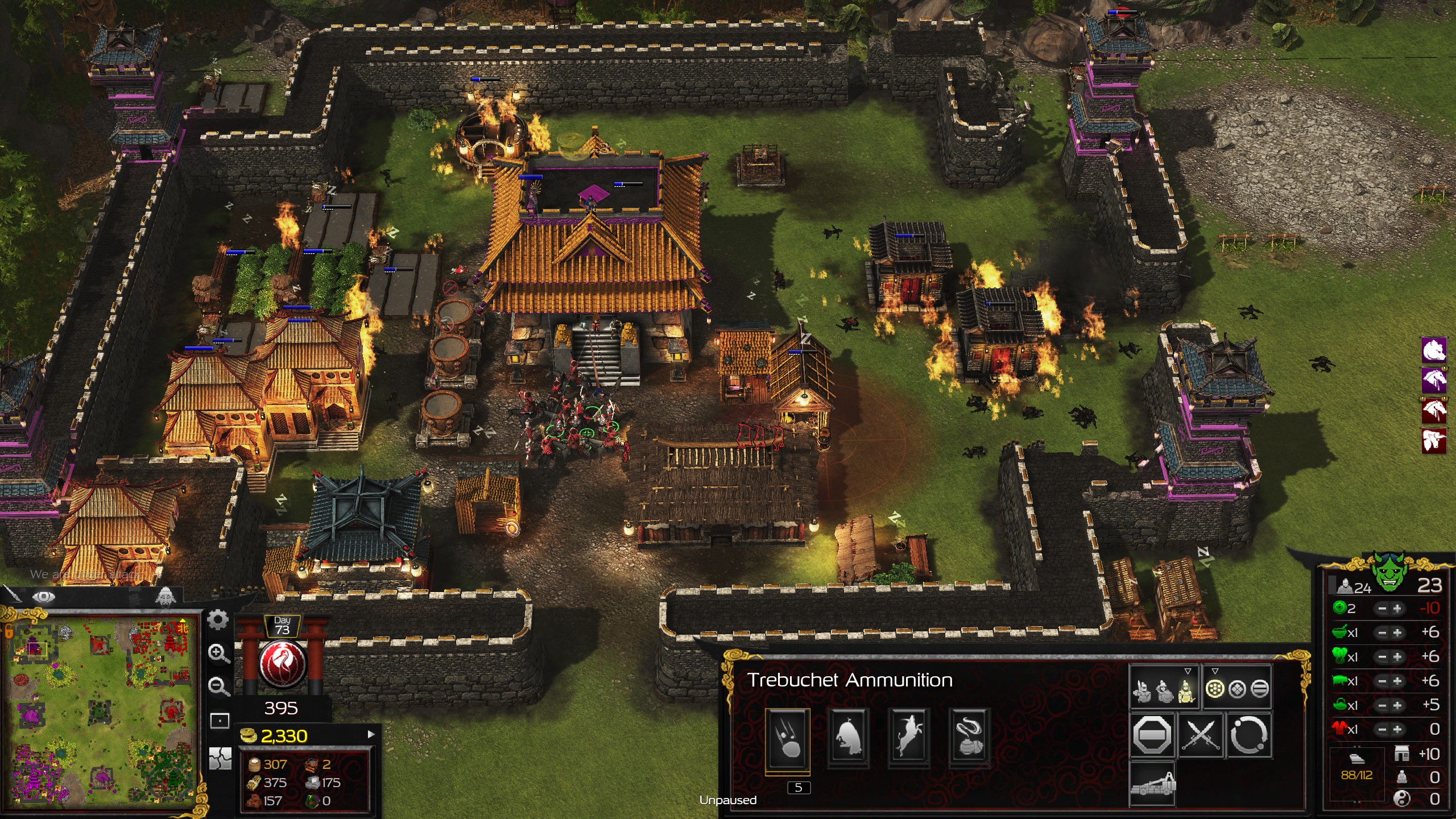Our Verdict
A decent if generic strategy game that lacks the big personality and siegecraft of earlier entries.
PC Gamer's got your back
What is it? Base-building real-time strategy game set in the far east.
Expect to pay £27/$36
Developer Firefly Studios
Publisher Firefly Studios
Reviewed on AMD Ryzen 7 5800X, Radeon 5700XT, 16GB RAM
Multiplayer? Online co-op and PvP
Link Official site
The original Stronghold holds a special place in my heart. You build a medieval barony, surround it with a labyrinth of impassable walls, and stave off waves of attackers while keeping the serfs living within happy, well fed and well taxed. It had real character too, with a lovely soundtrack, snappy unit soundbites and memorable villains.
I tend to think that the series’ decades-long endurance despite often lukewarm player and critical reception speaks to an enduring hope that it one day goes back to that simple principle of building and protecting your castle against relentless waves of attackers—that maybe the next Stronghold will finally be the one to both take us back and move us forward.
Stronghold: Warlords isn’t that game. In fact, it’s the most sprawling entry in the series yet—largely abandoning the principle of building a feudal gauntlet for waves of enemies in favour of a more traditional RTS setup featuring larger maps and symmetrically placed enemy bases. In other words, it’s more Age of Empires than Stronghold, but without the technological progression, or scouting, or distinct factions, or scuffles over resources. It’s also set in the far east, where you pick from four historical real-life leaders of China, Japan, Vietnam and Mongolia.
The titular Warlords system is the twist here. Between your base and the enemy’s, there are several smaller estates on the map held by neutral warlords. Defeat these warlords, and they’ll join your side, sending you resources, letting your troops shelter in their mini-forts, and even launching attacks on your enemies.
It’s a decent idea in principle but falters on a couple of levels. Firstly, it means that your main keep which you so meticulously bolster with walls, ballistas, towers, hidden gunpowder traps and fire arrow launchers doesn’t see a ton of action. Most of your time in a skirmish will be spent scuffling over these warlord forts that you don’t have any hand in building or designing except for preset upgrades that you buy with diplomacy points. The climactic sieges do happen eventually, but they’re not at the heart of the game like they used to be.
You can use diplomacy points to sweet-talk warlords to your side instead of fighting them. I found that once I was deep into a game, with each remaining team having piled up these points, I’d get embroiled in an endless tug of war on the diplomacy screen with the warlords endlessly flip-flopping between my team and an enemy’s. The diplomacy is both simplistic and fiddly, and the last thing I want to be doing while defending on one front and besieging on another is clicking a big button on a menu to make a number go up.
The combat itself feels good for the most part. Siege equipment is varied, ranging from trebuchets that can fire not only rocks, but fire and diseased animals into enemy forts, to laddermen and mantlets that protect your incoming troops from the inevitable arrow barrages. Seeing a city burn and crumble before funnelling troops into it is still a joy, and I had a few highlight reel moments with the gunpowder-loaded oxen that I’d send on kamikaze death-runs into poorly guarded siege equipment.
Keep up to date with the most important stories and the best deals, as picked by the PC Gamer team.
Regular melee, cavalry and ranged troops are joined by far eastern classics like samurai, warrior monks, horse archers and ninjas—who can scale walls without ladders. Fire lancers meanwhile, can burn entire regiments with their medieval flamethrowers. These pyromaniacs shriek maniacally when you select them, making you question whether the least mentally stable soldiers should be wielding the only weapons also capable of damaging your own troops. It’s a solid lineup, offering more tactical variety than past iterations while retaining some of the whimsy that the series at its best had.
Back on the homefront, you’ll need to keep the people happy with food, clothing, tea and temples if you want to crank up those taxes. It’s strange that you can only gather resources from within the rather limited building boundaries of your solitary keep, as it means that you need to procure most of your resources through warlords under your command or the market, where you can buy and sell all goods in the game. That means no fighting over resources on the map, which makes games that bit less strategic.
Despite the teething awkwardness, I did get into a groove with this economic system, setting surplus resources to auto-sell once they hit a certain point while auto-buying those I lacked so that they always stayed at a minimum threshold.
The campaigns fall for that RTS trap of serving as expanded and often mundane tutorials
You can choose whether you’re a popular ruler or a feared one through buildings—a theatre on the one hand; public torture equipment on the other. Each approach grants its own bonuses, and rounds off a pretty satisfying city-builder element that’s a pleasure to watch when working efficiently. Oxen carry iron from mine to stockpile, farmers work the fields, and little people scurry between shacks and pagodas illuminated by ambery hanging lanterns, offering soundbites on the state of things when you click them (so usually whining about taxes, in my case). Managing and designing your fiefdom was always a strongpoint of the series, and Warlords upholds that tradition.
It’s taken a while to get round to talking about the campaigns, which no doubt will be on the minds of those who remember the original game’s run of medieval vaudeville villains (medievaudevillains, if you will) and kooky cutscenes. But really there’s not much to tell here, with the campaigns falling for that RTS trap of serving as expanded and often mundane tutorials for the main events: skirmish mode and multiplayer.
There are five reasonably lengthy campaigns set across east Asia, each casting you as a real-life historical ruler of the respective region. Each one has a slightly different angle—from galloping around the plains of Mongolia as Genghis Khan to Thuc Phan’s quest to become king of the Au Lac kingdom in the jungles of modern-day Vietnam.
There’s plenty of hours here but not much substance—no cutscenes, no big personalities to pit yourself against, and no mid-mission twists. The faction leaders and their rivals are avatars more than characters, only rarely popping up in the corner of the screen to grimace and scowl at you.
The campaign missions often restrict the units and buildings you can use, forcing you to really try and make the most of limited resources. These restrictions also give the impression that the factions somehow play differently from one another, but once you start playing skirmish mode—the meat and rice of the game—you find that each one is much the same: identical units and identical buildings except for the bright neon colour banding around them. Even if it was the case that somehow the architecture across several asian nations thousands of miles (and thousands of years, based on the rulers) apart was identical, it doesn’t feel satisfying in a genre that’s most interesting when there’s some asymmetry and distinctions between the combatants.
By leaving behind the safety of its castle walls, Stronghold has ventured out into a field where Age of Empires still reigns supreme. It’s a tough ask, especially when at the time of writing it seems that autosave isn’t working and performance unstable and prone to crashes. It doesn’t feel quite ready for the kind of game it wants to be.
Stronghold: Warlords still shines during sieges, when piles of enemies collapse beneath swarms of arrows, ladders and ninjas cling to walls, and soldiers fly out of towers toppled by catapult fire. There’s enough customisation in the skirmish mode that you can manufacture these gruelling attritional standoffs, but much of the game between these feels too thin. I’m still waiting for the day when this series reels things in and builds on its sturdy siegecraft foundations, instead of diluting them with generic RTS trappings and other systems that don’t quite click.
A decent if generic strategy game that lacks the big personality and siegecraft of earlier entries.
Robert is a freelance writer and chronic game tinkerer who spends many hours modding games then not playing them, and hiding behind doors with a shotgun in Hunt: Showdown. Wishes to spend his dying moments on Earth scrolling through his games library on a TV-friendly frontend that unifies all PC game launchers.







